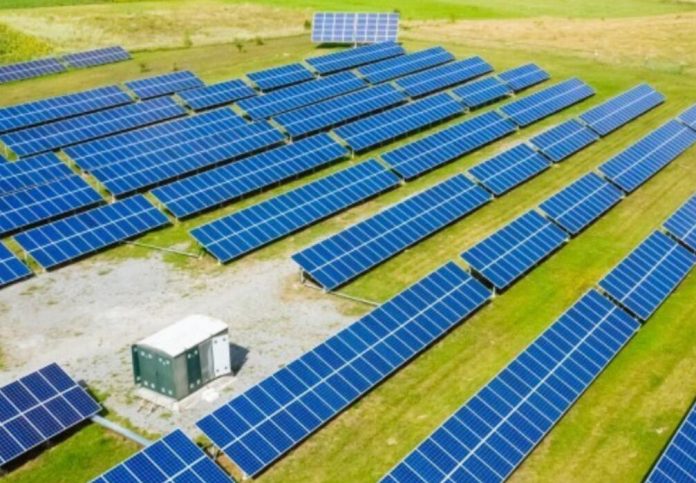Robust Execution Plan, Financial Infrastructure Needed to Install 300 GW of Solar by 2030
Mercom hosted a session on ‘Solar’s Dominant Role in India’s Transition: Market Outlook 2030’ at Mercom India Solar Forum 2021 to take a close look at the policy framework of the Indian solar market and its role in the country’s energy transition.
The panelist also discussed the strategies for expanding solar deployment, overcoming the hurdles, and investments needed to meet the ambitious targets.
The panel included Suman Sharma, Managing Director, Solar Energy Corporation of India (SECI); Raj Prabhu, CEO, Mercom Capital Group; Aditya Aggarwal, CEO, Global Infrastructure Partners Singapore; and Deepak Malhotra, Senior Director – Infrastructure, CDPQ.
Priya Sanjay, Managing Director of Mercom India, hosted the session.
India sets a target to install 100 GW of solar capacity by 2022 and 300 GW by 2030. Solar and wind have dominated capacity additions since 2017. However, India installed 43.6 GW of solar capacity at the end of June 2021. To achieve 300 GW capacity by 2030, India needs to install 28 GW of new solar capacity annually from 2022 onwards, three times higher than the capacity installed in any given year.
Despite significant capacity additions in the past decade, solar and wind need to take long strides to make a substantial dent in the dominance of thermal power generation. Thermal continues to be the dominant generation source despite a decline in new capacity additions in the past four years.
According to Mercom’s forecast, India will add around 100 GW of solar capacity by 2025 based on the existing market scenarios. In this case, India needs to add 41 GW of new capacity annually to achieve the target of 300 GW solar by 2030.
“SECI, being an implementing agency of the Government of India, will play a key role in achieving these targets,” said Suman Sharma. “SECI issues tenders with long term power purchase agreements (PPA) and power sales agreements (PSA). In addition, it also provides a secure payment mechanism that ensures developers to push towards more installations and investments.”
“In addition, SECI, as a developer, will invest in new technologies to develop solar in which private players could not invest in initial stages. With the support of the central government,” Suman Sharma added.
However, Malhotra believes that reforms in the distribution sector are critical for the continuous growth of the solar market. There is a lag in signing PPAs as distribution companies (DISCOMs) do not enter into PSAs due to their poor finances and operation inefficiency. In addition, the government needs to provide payment mechanism security and resolve policy-related issues quickly to achieve the target of 300 GW by 2030.
In July 2021, the Ministry of Power issued detailed guidelines for a reform-based result-linked power distribution program over the next five years.
Prabhu agreed with Malhotra and said, “Renewable purchase obligations (RPO) are a primary mechanism for states to adopt solar. However, it is not enforced properly, and many states miss their RPO targets. In addition, the market faces new policy issues every six months, and the authorities take a long time to resolve these issues. Therefore, the target of 300 GW by 2030 looks a bit difficult to achieve as we are still halfway to achieving the target of 100 GW by 2022.”
“The authority should have a clear calendar of bids that keep irrationality of the private sector in check,” said Aggarwal. “The government also needs to have a pragmatic approach towards implementing basic custom duty and remove instability around taxation. In addition, the authority should make sure that sanctity of contracts is maintained, and disputes are resolved in a short time.”
On issues related to PPAs, Suman Sharma said SECI had signed PSAs for 30 GW, and 14-15 GW capacity is in the pipeline. We are hopeful of overcoming bottlenecks for PSA signing as DISCOMs energy demand is increasing.
Solar module manufacturers believe that prices of Chinese modules are expected to stay high until the first quarter (Q1) of the calendar year (CY) 2022. Modules prices have gone up from $0.25/W in Q1 2021 to over $0.30/W to date.
Robust Execution Plan, Financial Infrastructure Needed to Install 300 GW of Solar by 2030
Reforms in the distribution sector and long-term stable policies will be the key to achieving this target
Source:MERCON
ViaHarsh Shukla






